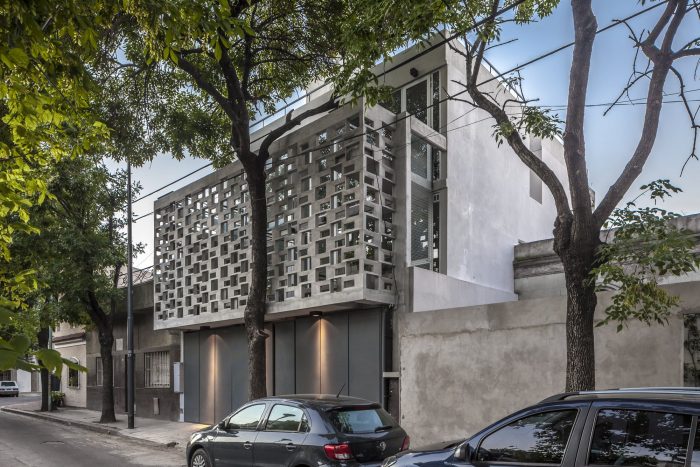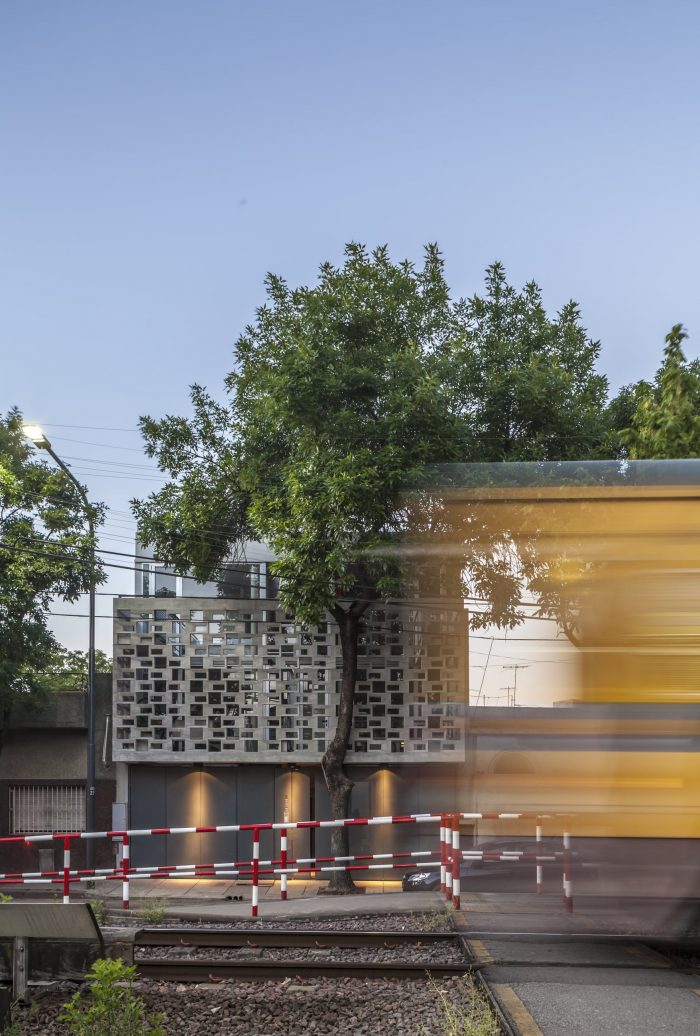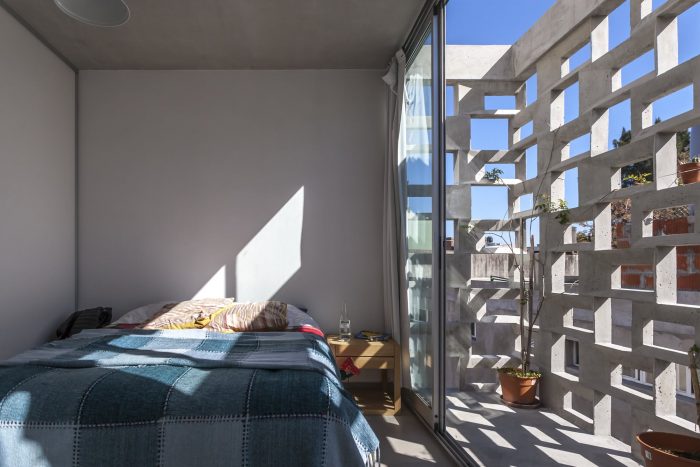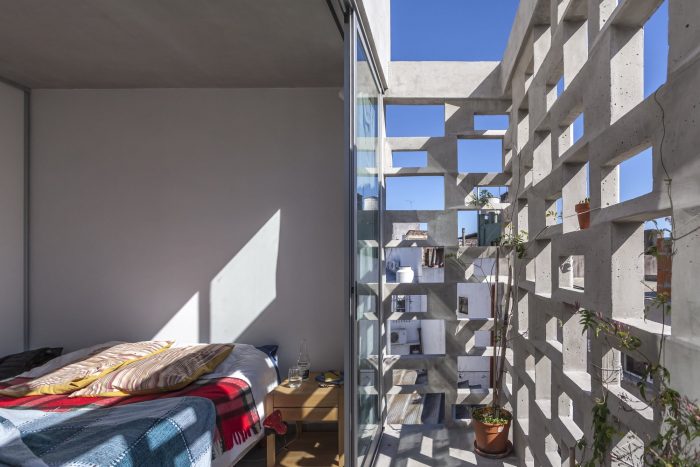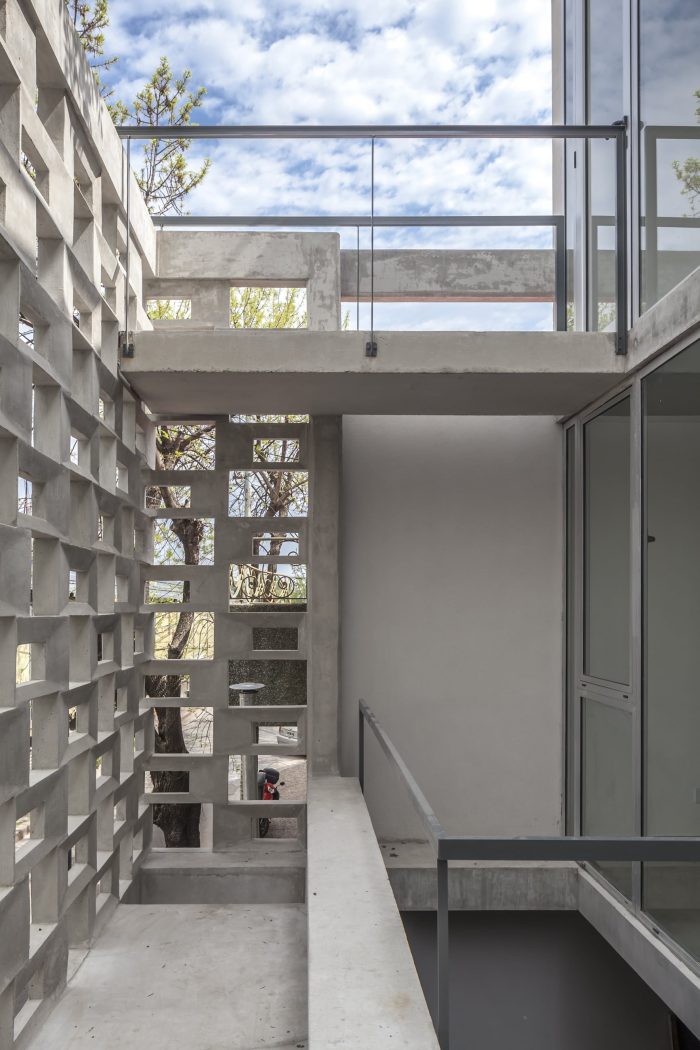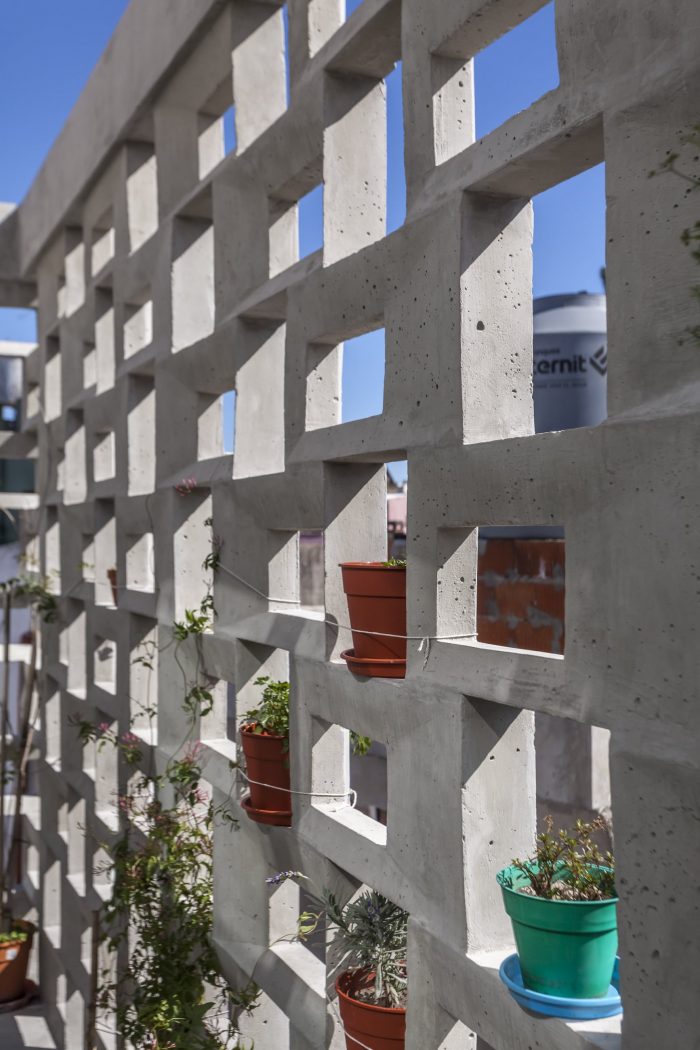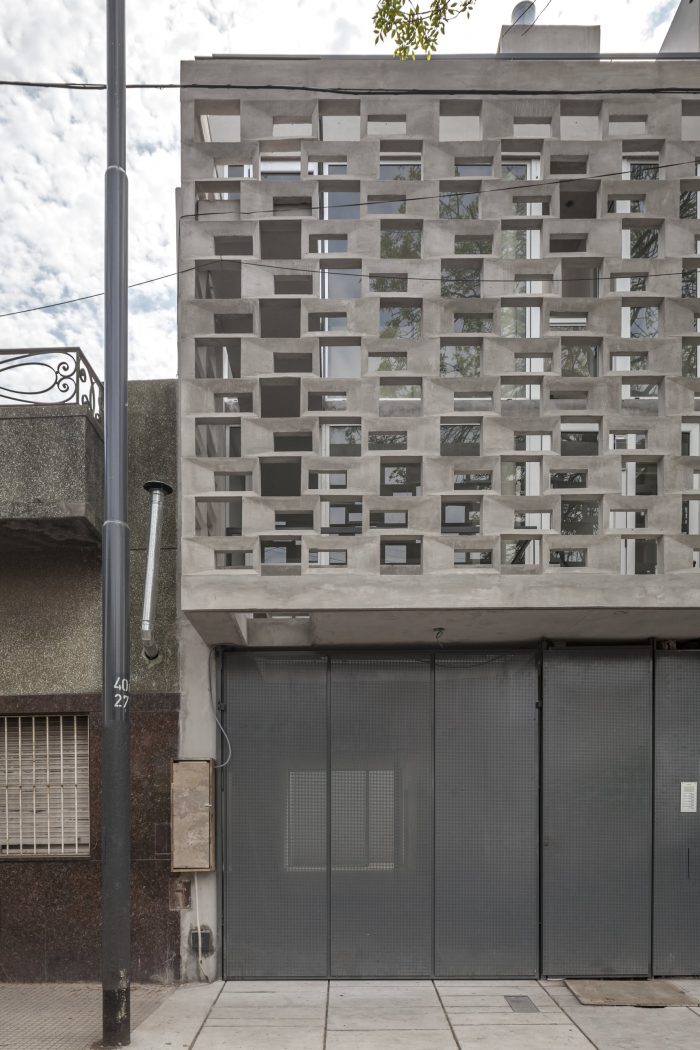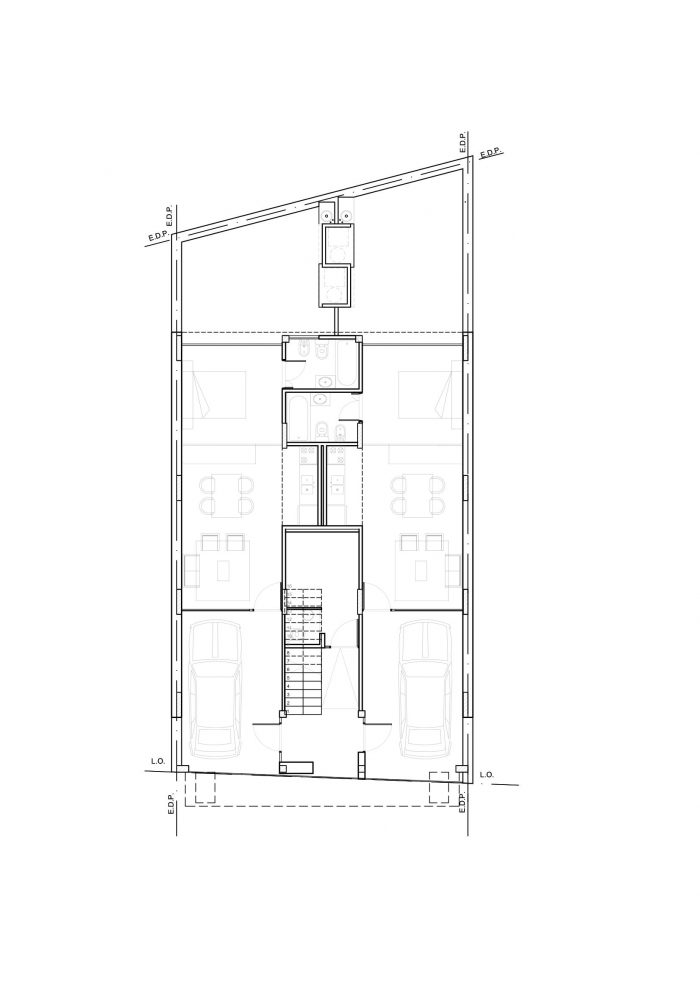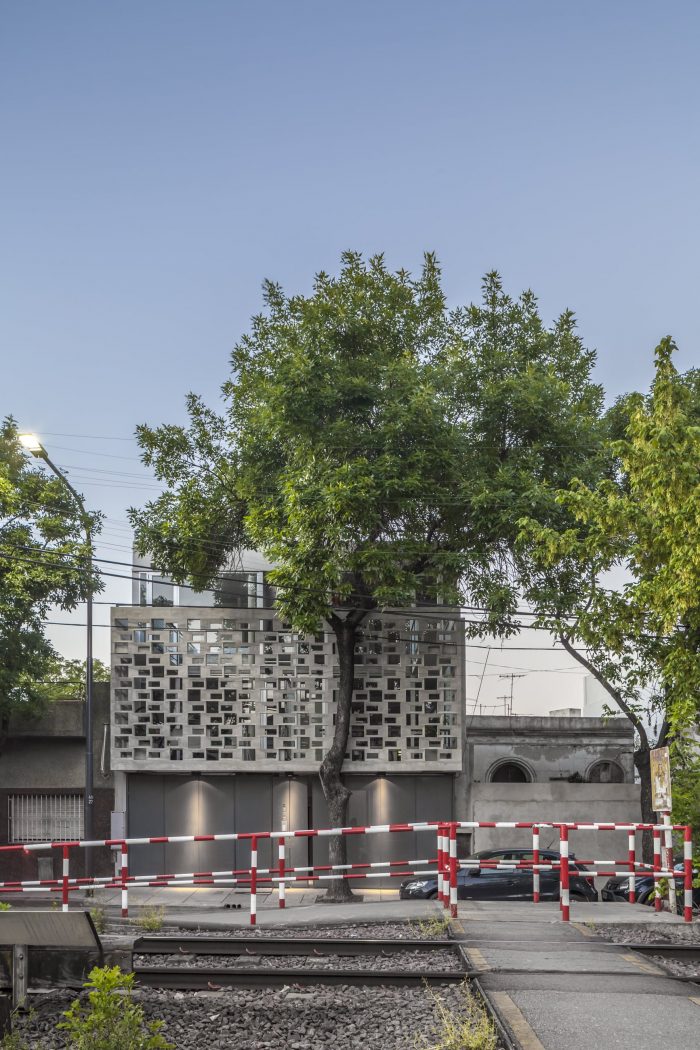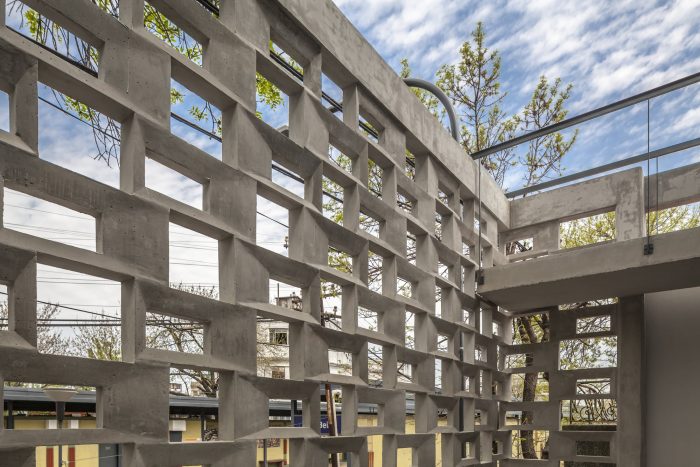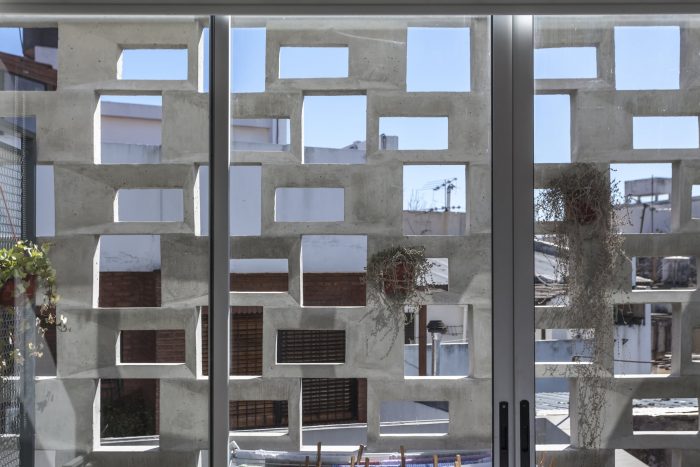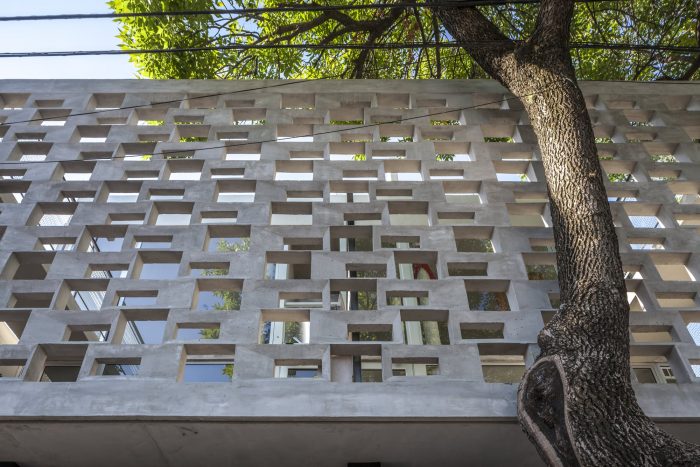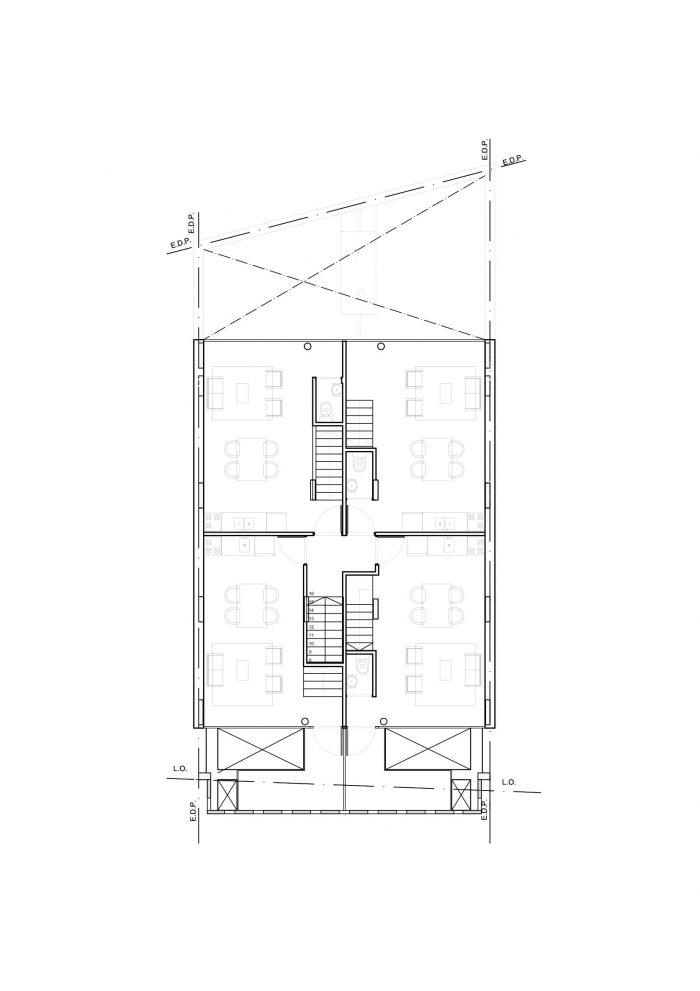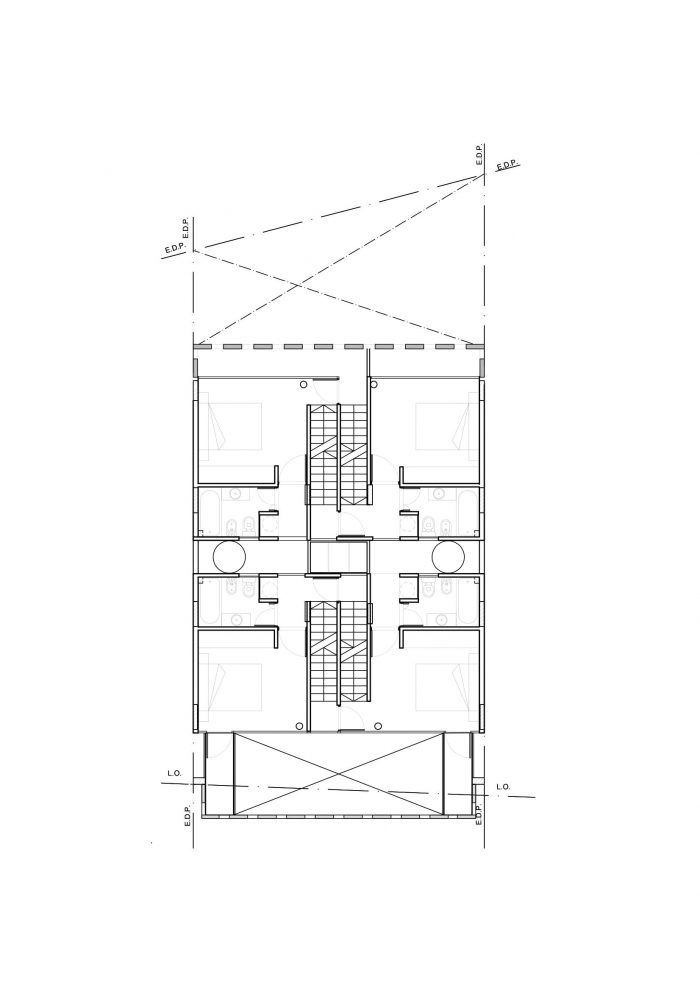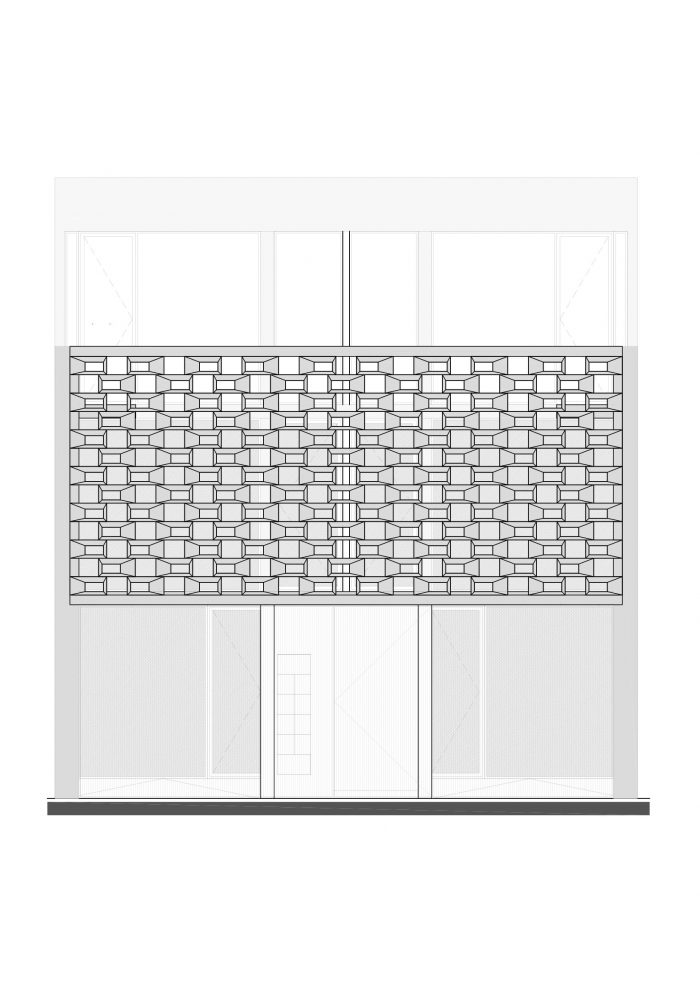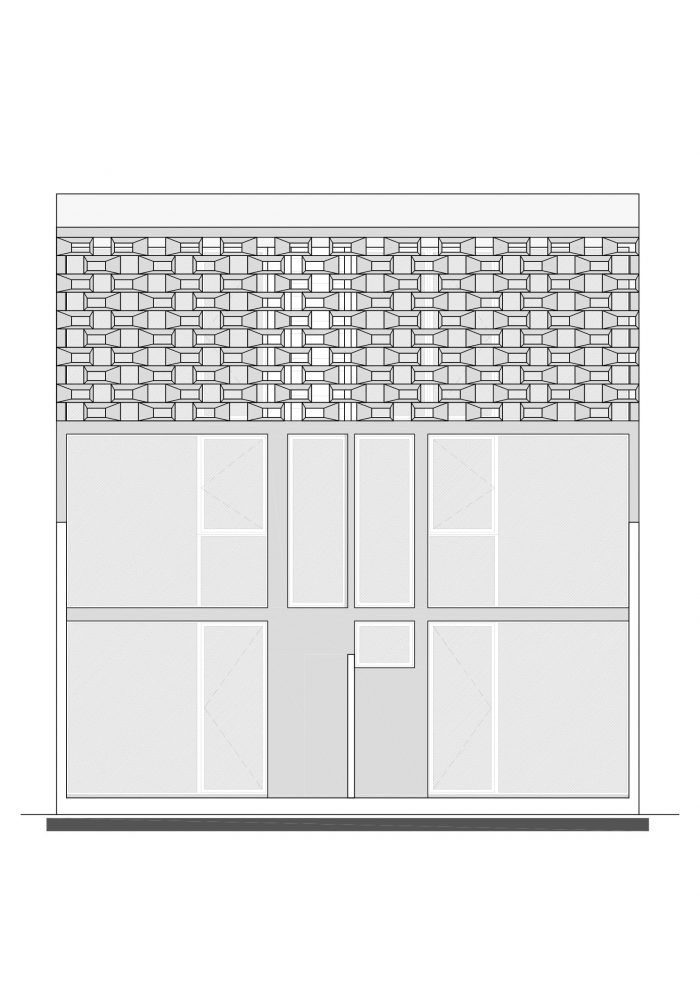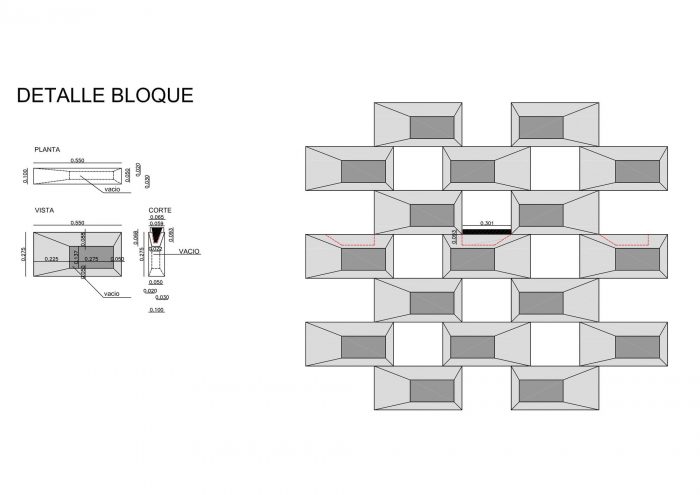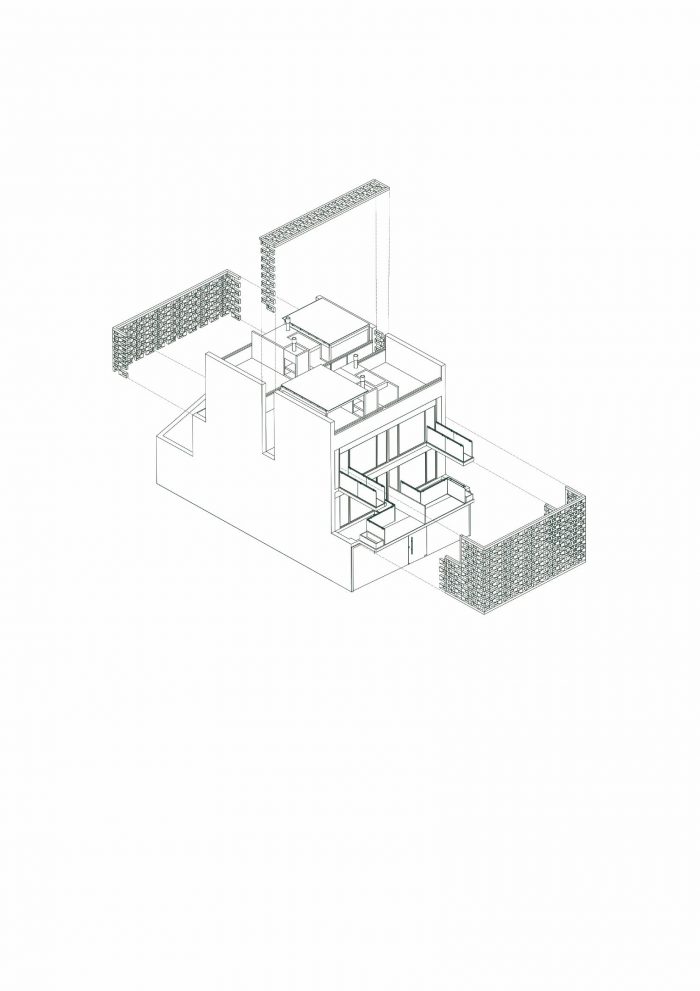情况
这是一栋有六个住房单元的建筑,位于Agronomía社区的一块8.66 x 16米的小土地上。位于一个非典型的街区,在圣马丁轨道的Beiro站前面,有一个低住宅区的限制,有可能建造整个场地。
Situation
It is building with six housing units, in a small lot of 8.66 x 16m, located in the Agronomía neighbourhood. Is located in an atypical block, in front of the Beiro Station of the tracks of the San Martin Railcar, has the limitations of a low residential zone, which has the possibility of built the entire site.
该建筑完成了最大的可建体积,形成了一个穿孔的盒子,产生了天井或露台,通过预制混凝土块的表皮重建其外围护结构,缓解了噪音,并允许调节隐私的梯度,亮度和不透明度与外部的关系。
The building completes the maximum buildable volume, forming a perforated box, generating patios or terraces towards the perimeter of the facade, rebuilding its outer envelope through a skin of prefabricated concrete blocks, that mitigate the noises and allows to regulate the gradients privacy, luminosity and opacity in relation to the exterior.
配置
该项目分为三层,提出了其单一材料的外观和复杂的内部之间的紧张关系,这使得复式单元可以可视化。
Configuration
The program is developed in 3 floors, proposing a tension between its mono-material exterior and a complex interior, which allow to visualize the duplex units.
这些形态学程序,结合所提出的材料渗透性,试图通过促进一个重要的内部空间性,来促进一种现象学体验。
These morphological procedures, in conjunction with the proposed material permeability, try to promote a phenomenological experience by promoting a vital interior spatiality.
构造学
建筑物的结构和表皮是由钢筋混凝土构成的,它采用了一定程度的渗透性,与单元的外部扩张有关。表皮是由现场预制的轻质混凝土块实现的。
Tectonics
The structure and skin of the building are mede of reinforced concrete, which adopt certain degrees of permeability in relation to the external expansions of the units. The skin was materialized with lightened concrete blocks, which were prefabricated on site.
该项目被提议作为一项材料调查,允许用户体验与建筑及其环境的多重关系,内部和外部之间的关系,光线的入射,其空间质量和住房单元的领域。
The project was proposed as a material investigation, allowing the user to experience multiple relationships with the building and its environment, the relationship between interior and exterior, the incidence of light, its spatial qualities and the domains of housing units.
布局
面对场地的最小尺寸和建筑法规的限制,建议的布局是围绕单位的最大可能的表面积,减少公共区域,并预测最大的扩展和不计入建筑法规限制的区域。
Layout
Facing the minimum dimensions of the site and the constraints of the Building Code, the proposal layout is around the maximum possible surface area for the units, reducing common areas and projecting maximum expansions and areas that don’t count for the Building Code limitations.
在一楼有可分割的单人单元,有车库和天井,在一楼开发了4个带阳台的复式楼,这些阳台被嵌入到楼梯的开发中,允许个人进入阳台。
On the ground floor there is the divisible single-unit units with garage and patio and on the 1st floor were developed 4 duplexes with balconies that are embedded in the development of their stairs, allowing individual access to the balconies.
该提案解决了其扩展区域(阳台),并围绕这些空间进行安排,因此出口和服务都在场地的中心。
The proposal resolves its expansion areas (balconies) and are arranged around these spaces, so the exit and services are in the center of the site.
结果
一个具有最小尺寸的场地的特殊性和建筑法规所允许的体积最大化的可能性使我们能够研究建筑对象的某些操作。
Results
The particularity of a site with minimum dimensions and the possibility of maximizing the volume allowed by the Building Code allows us to investigate certain operations of the architectural object.
Architects: Arqtipo, SCANW Arqs
Area : 295 m²
Year : 2017
Photographs :Federico Kulekdjian
Manufacturers : GIROLA, Quimtex, VAGOL
Construction Director : Cecilia Giménez
Project Leader : Lucas Gorroño
Other Participants : Martin Gianni
Design Team : Arqtipo; Diego Aceto y Dario Litvinoff, Estudio Valor Gris; Juan Pablo Negro y Alejandro Camp, Mercedes Perez Wodtke, Hernan Schikler
City : Agronomía
Country : Argentina


